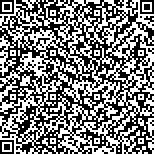李岩,顾旭东,时美芳,李辉,傅建明,吴华.基于镜像神经元理论的运动想象训练对脑卒中患者运动功能及步态的影响[J].中华物理医学与康复杂志,2015,37(7):518-530
扫码阅读全文

|
| 基于镜像神经元理论的运动想象训练对脑卒中患者运动功能及步态的影响 |
|
| |
| DOI: |
| 中文关键词: 镜像神经元 运动想象疗法 运动功能 步态 |
| 英文关键词: Mirror neuron theory Motor imagery therapy Motor function Gait Stroke |
| 基金项目:浙江省卫生厅医药卫生平台骨干人才计划(2013RCA043);浙江省科技厅公益技术项目(2014C33278) |
|
| 摘要点击次数: 4732 |
| 全文下载次数: 5856 |
| 中文摘要: |
| 目的观察基于镜像神经元理论的运动想象训练对脑卒中患者运动功能及步态的影响。 方法将脑卒中偏瘫患者49例按随机数字表法分为治疗组24例和对照组25例,2组患者均接受常规神经内科药物治疗和常规康复治疗,治疗组在此基础上增加基于镜像神经元理论的运动想象训练,每日1次,每次20min,每周训练5d,连续训练8周。治疗前和治疗8周后(治疗后)对2组患者的下肢运动功能(FMA)、步行能力(FAC)、双侧平均步长、健侧和患侧负重时间百分比以及6min步行距离进行评定。 结果2组患者的FMA、FAC、双侧平均步长、健侧和患侧负重时间百分比以及6min步行距离组间比较,差异均无统计学意义(P>0.05),治疗后,2组患者的FMA评分、FAC分级、双侧平均步长、健侧和患侧负重时间百分比以及6min步行距离与组内治疗前比较,差异均有统计学意义(P<0.05),且治疗组治疗后的各项指标[FMA为(28.12±5.23)分,FAC为(3.92±0.86)级,健侧平均步长为(0.52±0.06)m,患侧平均步长为(0.53±0.05)m,健侧负重时间百分比为(51.73±1.33)%,患侧负重时间百分比为(48.26±1.33)%,6min步行距离为(373.78±23.46)m]均显著优于对照组治疗后,差异均有统计学意义(P<0.05)。 结论基于镜像神经元理论的运动想象训练可显著改善脑卒中患者的运动功能和步态。 |
| 英文摘要: |
| Objective To investigate the effect of motor imagery therapy based on mirror neuron theory on the motor function and gait in stroke survivors. MethodsForty-nine stroke survivors were randomly divided into a treatment group (n=24) and a control group (n=25) using a random number table. All the patients in both groups were given similar conventional rehabilitation treatment. In addition, the patients in the treatment group were given motor imagery training based on mirror neuron theory once a day for 20 min each time, 5 days a week, lasting 8 weeks. The Fugl-Meyer assessment (FMA), Functional Ambulation Categories (FACs), average step length, the percentage of time spent on the intact foot and the paralyzed foot, and 6 minute walking distance were used to evaluate the subjects′ motor function and gait before and after 8 weeks of treatment. ResultsBefore the intervention there was no significant difference between the two groups in terms of any of the measurements. At the end of the 8 weeks of treatment all measurements in both groups had significantly improved compared with before training. The averages of all the measures were significantly better in the treatment group than in the control group. ConclusionsMotor imagery training based on mirror neuron theory can improve the motor function and gait of stroke survivors. |
|
查看全文
查看/发表评论 下载PDF阅读器 |
| 关闭 |